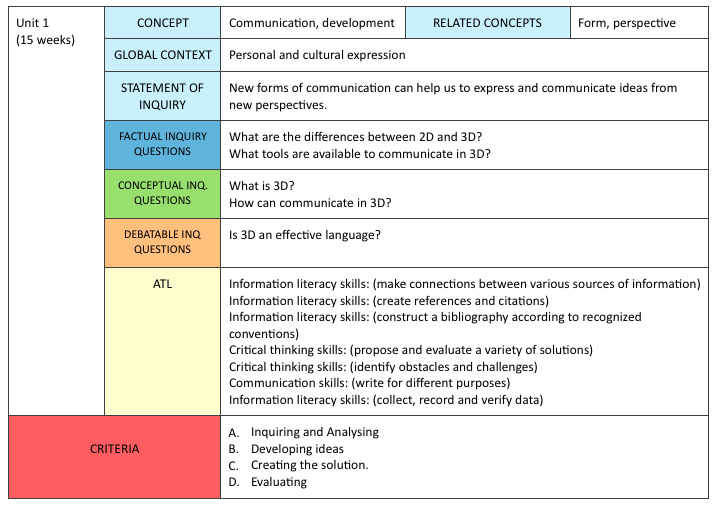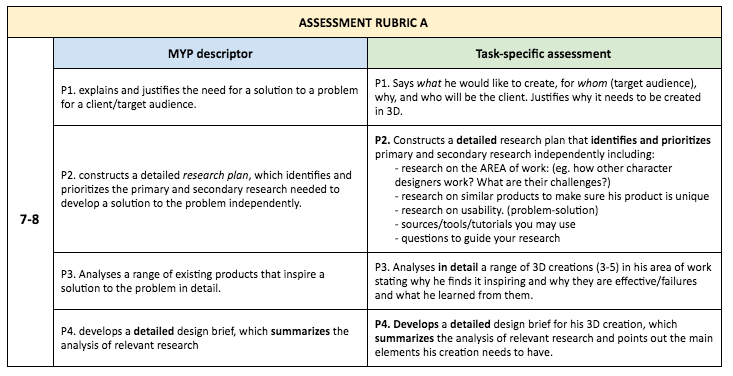Unit: Speak 3D, crit A
|
This is a huge unit and I am going to need your help. What is 3D? What does it mean? Don’t we live in a 3D world? What does 3D means when we refer to the digital world? Are 3D movies really 3D? In Digital Design we have been designing 2D pieces and now it is the time to move into 3D. How are we going to do that? What kind of thinking are we going to need? We are going to start by making a brainstorming session collecting what 3D means to you.
3D is a new language and we need to apply it to communicate our ideas. But first and most importantly we need to have those ideas. There is no point otherwise. Remember we are in this class to THINK not to learn to use this or that software. Software comes and goes, but the ability to think continues to be scarce. And that is really what is going to make a difference. So let’s not worry about the software yet. We are going to spend the two first parts of the unit thinking, envisioning and dreaming. And once we know what we want to make and why, we will explore what is the best way to do so. If we introduce the software early in the process it will limit our thinking since “We will only consider what we know we can do.” And that is extremely dangerous.
What is 3D in today’s digital world? This inspiration reels will show you what are we able to do today. So to go a bit further I have have broken the digital world into 4 main areas. It is not the only way to organize this and please feel free to question this division, but it is just a way to start somewhere.
I want you to investigate one area in groups, looking for inspiration, for cool things you find, try to define what that means, what it entails and then you will present it to the rest of the class. After the presentations, and some introduction to what 3D can imply in the digital world, I would like you to start thinking what 3D object/piece/creation you would like to “make” in this class.
Criteria A, Inquiring and Analyzing.It is now time for you to decide what you would like to make in this 3D class. Remember that as a designer you need to be solving a problem. You are creating something that does not exist, something that the world needs. So when deciding what you are going to make you need to take into consideration the problem-solving aspect and the social aspect. Your creation needs to have a target audience: people that need this. Otherwise no one is going to want to invest in your creation, so you are not going to have a client. Once you know what you want to create in this class you need to communicate it. To do so you will have to present it in class and document it into your Process journal. You can follow the order you prefer, but you need to make sure you cover the main 4 parts: That means establishing your mission statement. Try answering the following questions in a paragraph:
How are you going to create it. Write down what are the different parts of the process, what questions you have, what areas are you going to have to investigate. Create a Research plan:
Time to look for inspiration. References. How did others create something similar? Learn from what others did and how they did it and write down your thoughts.
After all your research it is time to revisit what you wrote in part 1 and add some more concrete information. “I want to make X and after my research I have learned that I will need to consider Y, Z and W.” Remember that the design brief will help you define the design specifications in criteria B, so the more concise it is, the better. A design brief is your response to the design situation, based on your research, detailing how you intend to solve the problem: a short statement of what you are going to make, why you are going to make it, and for whom you are making. But while the mission statement (part 1) was your ideal plan (what you would like to make), when writing the design brief you already learned how other people made things, you already know what is out there and what is missing, so you have a more clear idea of what the details of your creation should be.
Congratulations, you are ready to move into Criteria B. But remember that since it is a cycle, you can always come back to add or change something during your design process. You can find here the overall schedule for the unit. |

